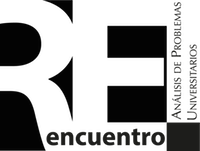Aproximación a las resistencias de género en los procesos de cambio estructural en las Instituciones de Investigación europeas
Palabras clave:
Cambio estructural, Género en la investigación, ResistenciaResumen
El presente trabajo pretende reflexionar sobre las resistencias al cambio estructural promovido por la ue en las instituciones de investigación y educación superior desde 2007. Tras realizar un repaso a la evolución de la transversalidad de género en los Programas Marco Europeos de investigación, este artículo presenta un análisis preliminar sobre el papel de los proyectos europeos financiados en este contexto y las resistencias al cambio estructural promovidos por los mismos.3
Citas
Abels, G. (2012). Research by, for and about women: Gendering science andreseach policy, en Abels, G. & Mushaben, J.M. (eds). Gendering the European Union: New approaches to old democratic deficits. Basingstoke: Palgrave Macmillan, pp. 187-207.
Acker, J. (2009). From glass ceiling to inequality regimes, en Sociologie du travail, Vol. 51, núm. 2, pp. 199-217.
Barnard, S.; Hassan, T.; Dainty, A.; Polo, L. & Arrizabalaga, E. (2017). Using communities of practice to support the implementation of gender equality plans: lessons from a cross-national action research Project, en Godfroy, A. S. & Pourrat, Y. (Eds.) Transferring, Implementing, Monitoring Gender Equality in Research Careers. edp Science (in press).
Benschop, Y. & Verloo, M. (2006). Sisyphus’ sisters: can gender mainstreaming escape the genderedness of organizations?, en Journal of Gender studies, Vol. 15, núm. 1, pp. 19-33.
__________, (2011). Gender change, organizational change, and gender equality strategies, en Jeanes, E. D. Handbook of Gender, Work, and Organization. West Sussex: John Wiley & Sons, pp. 277-290.
Cockburn, C. (1989). Equal opportunities: the short and long agenda, en Industrial Relations Journal, Vol. 20, núm. 3, pp. 213-225.
Comisión Europea (1999). Women and Science: Mobilizing Women to enrich European research. Bruselas: Comisión Europea.
__________, (2000). European Technology Assessment Network (etan) Report. Bruselas: Comisión Europea.
__________, (2004). Enlarge Women In Science to East (enwise) Report. Turning private struggles into a public issue: women and science in the Enwise Countries. Bruselas: Comisión Europea.
__________, (2005). Women and Science. Excellence and Innovation-Gender Equality in Science. Bruselas: Comisión Europea.
__________, (2008). Gender equality report Sixth Framework Programme. Bruselas: Comisión Europea.
__________, (2012). Communication from the Commission to the European Parliament, the Council, the European Economic and Social Committee and the Committee of the Regions: a Reinforced European Research Area Partnership for Excellence and Growth. Bruselas: Comisión Europea.
Consejo de Europa. (1998). Gender Mainstreaming. Conceptual Framework, Methodology and Presentation of Good Practices. Estrasburgo: Consejo de Europa.
Elizondo Lopetegui, A., Novo Arbona, A. & Silvestre Cabrera, M. (2010). Igualdad de mujeres y hombres en las Universidades españolas. Madrid: Instituto de la Mujer (Ministerio de Sanidad, Política Social e Igualdad).
Greenwood, R. & Hinings, C. R. (2006). Radical organizational change, en Clegg, S. R.; Hardy, C. & Lawrence, T. B. (Eds.) The sage handbook of organization studies, (pp. 814-842). Los Angeles: sage Publications.
Greenwood, D. & Levin, M. (2007). Introduction to action research: Social research for social change. London: sage Publications.
Hearn, J. (2001). Men and gender equality: Resistance, responsibilities and reaching out, en Men and Gender Equality Conference (Swedish EU Presidency Calendar of Meetings). Örebro, University, pp. 15-16.
Husu, L. (2001). On metaphors on the position of women in academia and science, en nora: Nordic Journal of Women’s Studies, Vol. 9, núm. 3, pp. 172-181.
Jewson, N. & Mason, D. (1986). The theory and practice of equal opportunities policies: liberal and radical approaches, en The Sociological Review, Vol. 34, núm. 2, pp. 307-334.
Kirton, G. & Greene, A. M. (2015). The dynamics of managing diversity: A critical approach. Gran Bretaña: Butterworth-Heinemann.
Laurila, P. & Young, K. (2001). Gender in Research. Gender Impact Assessment of the specific programmes of the Fifth Framework Programme. An overview. Bruselas: Comisión Europea.
Lee-Gosselin, H. (2009). Les pae–est-ce une solution adaptée pour l’intégration des minorités visibles et culturelles au travail, en Eid, P. (Ed.), Pour une véritable intégration. Droit au travail sans discrimination, Québec: Fides / Commission des droits de la personne et des droits de la jeunesse, pp. 217-239.
Lee-Gosselin, H.; Briere, S. & Hawo, A. (2013). Resistances to gender mainstreaming in organizations: toward a new approach, en Gender in Management: An International Journal, Vol. 28, núm. 8, pp. 468-485.
Lombardo, E. & Forest, M. (2012). The Europeanization of Gender Equality Policies, en In The Europeanization of Gender Equality Policies, pp. 1-27. Reino Unido: Palgrave Macmillan.
Lombardo, E. & Mergaert, L. (2013). Gender mainstreaming and resistance to gender training: A framework for studying implementation, en nora-Nordic Journal of Feminist and Gender Research, Vol. 21, núm. 4, pp. 296-311.
Mergaert, L. & Lombardo, E. (2014). Resistance to implementing gender mainstreaming in eu research policy, en Weiner, E. & MacRae, H. (Eds.) The persistent invisibility of gender in EU policy, European Integration online Papers (EIoP), Special issue 1, Vol. 18, Article 5, pp. 1-21. Recuperado de: http://eiop.or.at/eiop/texte/2014-005a.htm
Miles, M.; Huberman, A. & Saldaña, J. (2014). Qualitative Data Analysis: A Methods Sourcebook. Thousand Oaks, California: sage Editions.
Ruiz, J. I. (2012). Metodología de la investigación cualitativa. Bilbao: Publicaciones de la Universidad de Deusto.
Saldaña, J. (2016). The Coding Manual for Qualitative Researchers. London: sage Publications.
Silverman, D. (2006). Interpreting Qualitative Data. London: sage Publications.
Webb, J. (1997). The politics of equal opportunity, en Gender, Work and Organization, Vol. 4, núm. 3, pp. 159-170.






